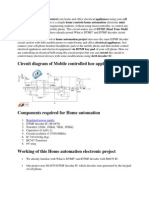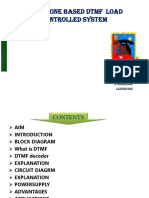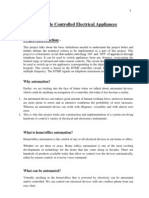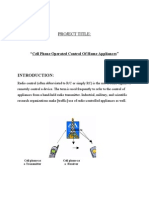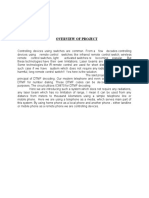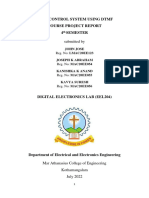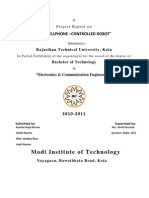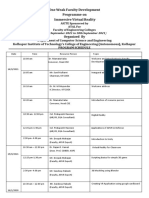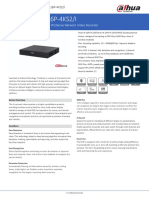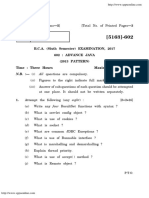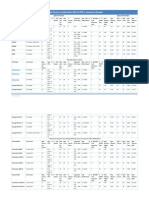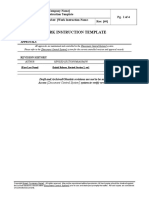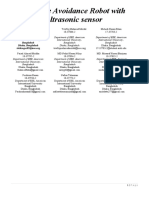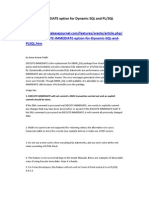0% found this document useful (0 votes)
78 views9 pagesGSM Controller: Project Synopsis ON
This project allows controlling electrical appliances through a mobile or landline phone from anywhere. A base unit is connected to the landline in parallel and can be activated by calling the home number and entering an access code. The base unit then allows switching appliances on or off using switch codes. It uses a DTMF decoder IC to convert dual tone signals to binary outputs for controlling the appliances. The system is divided into receiving and decoding the DTMF signals, and controlling the appliances.
Uploaded by
Shaminder SohalCopyright
© Attribution Non-Commercial (BY-NC)
We take content rights seriously. If you suspect this is your content, claim it here.
Available Formats
Download as DOC, PDF, TXT or read online on Scribd
0% found this document useful (0 votes)
78 views9 pagesGSM Controller: Project Synopsis ON
This project allows controlling electrical appliances through a mobile or landline phone from anywhere. A base unit is connected to the landline in parallel and can be activated by calling the home number and entering an access code. The base unit then allows switching appliances on or off using switch codes. It uses a DTMF decoder IC to convert dual tone signals to binary outputs for controlling the appliances. The system is divided into receiving and decoding the DTMF signals, and controlling the appliances.
Uploaded by
Shaminder SohalCopyright
© Attribution Non-Commercial (BY-NC)
We take content rights seriously. If you suspect this is your content, claim it here.
Available Formats
Download as DOC, PDF, TXT or read online on Scribd
/ 9



